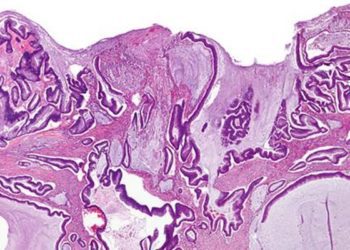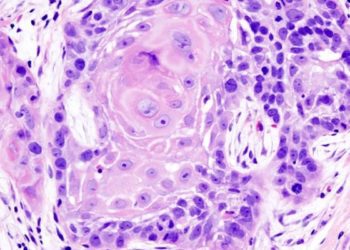Increased incidence of advanced breast cancer found in young women
Feb 26th – The incidence of advanced breast cancer in women ages 25-39 has increased from 1.53/100,00 in 1976 to 2.90/100,000 in 2009.
[tabs tab1=”2MM Rundown” tab2= “2MM Full Report”]
[tab]
Image: PD
1. The incidence of advanced breast cancer in women ages 25-39 has increased from 1.53/100,00 in 1976 to 2.90/100,000 in 2009.
2. The increase was statistically significant in African American and non-Hispanic white populations.
This retrospective study found the incidence of advanced breast cancer in women ages 25-39 has increased from 1.53/100,00 in 1976 to 2.90/100,000 in 2009. Of note, 7% of women with breast cancer are diagnosed before age 40 and survival is inversely proportional to age. While the incidence of breast cancer with distant disease is increasing in this age group, the authors also argue that this growth is also accelerating as evidenced by the increasing average compound increases, decreasing doubling times, and steeper regression lines in successive SEER registries.
Although women under 40 represent a small percentage of those diagnosed each year, they are more likely to be diagnosed with a more advanced stage breast cancer, have a worse prognosis, the least health insurance, and most years of life ahead of them, possibly suggesting the utility of some type of screening in this population. If the results of this retrospective study are corroborated in future studies, investigation into potential causes and possible interventions would certainly be warranted.
Click to read the study in JAMA
[/tab]
[tab]
Image: PD
1. The incidence of advanced breast cancer in women ages 25-39 has increased from 1.53/100,00 in 1976 to 2.90/100,000 in 2009.
2. The increase was statistically in African American and non-Hispanic white populations.
This [retrospective] study: This retrospective study was conducted to examine the breast cancer incidence, trends, and survival rates as a function of age and extent of disease at diagnosis. The data used was collected from 3 U.S. National Cancer Institute Surveillance, Epidemiology, and End Results (SEER) registries (1973-2009, 1992-2009, and 2000-2009). The incidence of advanced breast cancer in women ages 25-39 has increased from 1.53/100,00 in 1976 to 2.90/100,000 in 2009 representing an average compound increase of 2.07%/year. This magnitude of increase was not evident in any other age group. There was no change in the incidence of localized or regional disease in this age group. The increase in incidence was evident among all races and ethnicities but was statistically significant in African American and non-Hispanic white populations. The incidence of estrogen receptor-positive subtypes increased more than estrogen-negative subtypes.
In sum: This retrospective study found the incidence of advanced breast cancer in women ages 25-39 has increased from 1.53/100,00 in 1976 to 2.90/100,000 in 2009. Of note, 7% of women with breast cancer are diagnosed before age 40 and survival is inversely proportional to age. With no standardized screening recommendations for women less than 40 years of age, it may be hypothesized that cancers discovered in this cohort are more likely to be late stage. While the incidence is increasing, the authors also make an argument that this growth is also accelerating as evidenced by the increasing average compound increases, decreasing doubling times, and steeper regression lines in successive SEER registries. This is certainly epidemiologically and clinically significant.
Although women under 40 represent a small percentage of those diagnosed each year, they are more likely to be diagnosed with a more advanced stage breast cancer, have a worse prognosis, the least health insurance, and most years of life ahead of them, possibly suggesting the utility of standardized screening in this population. If the results of this retrospective study are corroborated in future studies, investigation into potential causes and possible interventions would certainly be warranted.
Click to read the study in JAMA
By Brittany Hasty and Rif Rahman
More from this author: Increasing malaria prophylaxis doses in pregnancy associated with decrease in low birth weight infants, More patients utilizing hospice services and choosing to die at home over past decade, Early antiretroviral therapy in HIV infection is associated with increased likelihood of CD4+ recovery
© 2013 2minutemedicine.com. All rights reserved. No works may be reproduced without written consent from 2minutemedicine.com. Disclaimer: We present factual information directly from peer reviewed medical journals. No post should be construed as medical advice and is not intended as such by the authors or by 2minutemedicine.com. PLEASE SEE A HEALTHCARE PROVIDER IN YOUR AREA IF YOU SEEK MEDICAL ADVICE OF ANY SORT. Content is produced in accordance with fair use copyrights solely and strictly for the purpose of teaching, news and criticism. No benefit, monetary or otherwise, is realized by any participants or the owner of this domain.
[/tab]
[/tabs]




